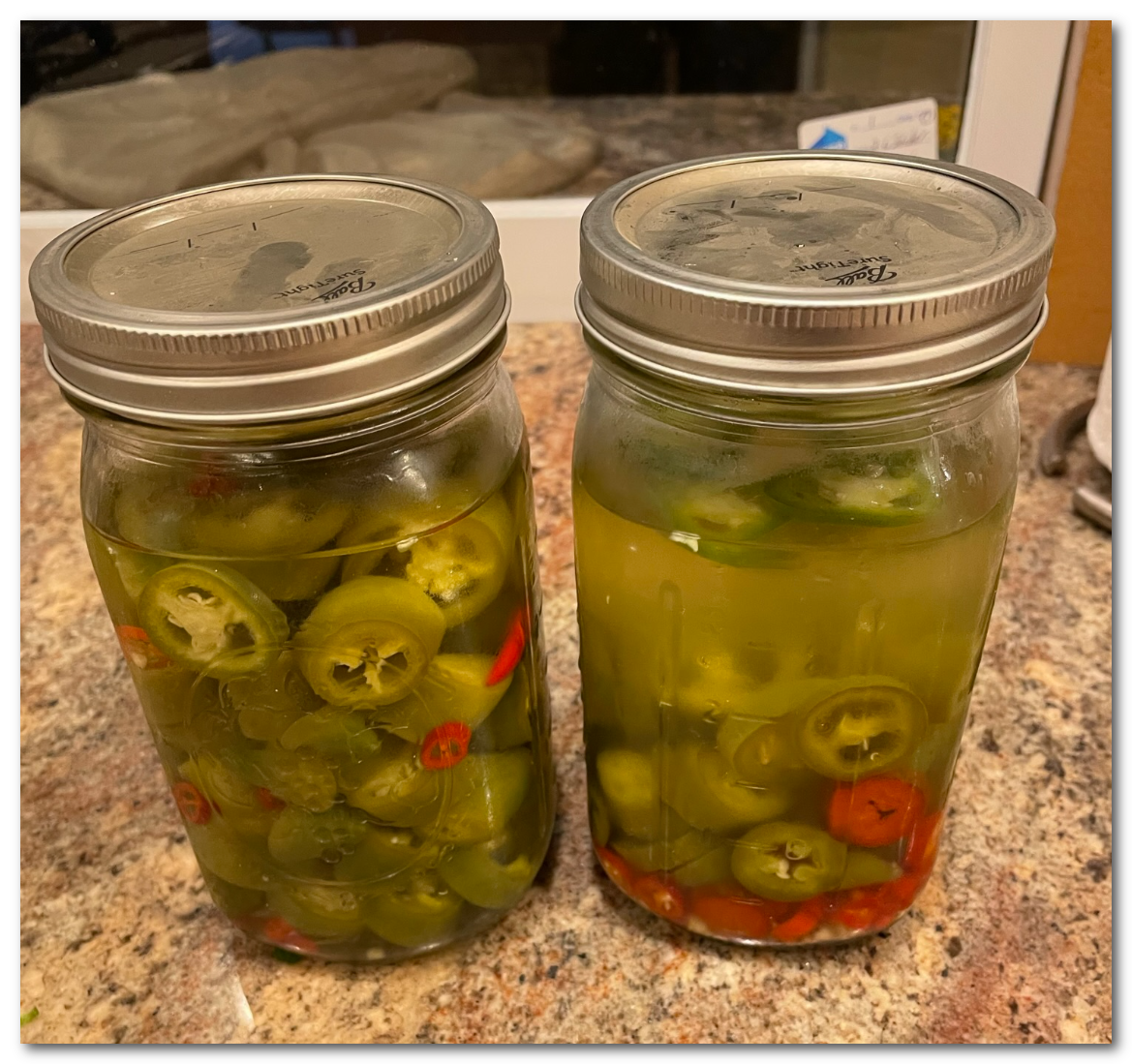Another batch of peppers. Whole peppers and garlic cloves, 3% brine.







Packaged. Some for gifts, most for home use.Pepper season is here!
I posted more detail in another thread already. Chili garlic paste just finished this morning.
View attachment 641567




I would remove the top, cut them in half, 20g Salt per 1000g water and off you go!so i happened acrost some peppers, but i need to figure out how to make them not spoil......you 2-3% salt water? i assume by weight?
View attachment 744723
past their prime i know, but it was a hand me down....would it be best to cut the tops off them to let the brine get to the inerds?
I would remove the top, cut them in half, 20g Salt per 1000g water and off you go!











No. Buy real, untreated salt.all i have is lite salt, 50/50 sodium-potassium chloride....will it work as good, do you think?
Never heard of it, just buy regular rock salt, like the Himalayan pink salt mentioned above.pickling salt then....
Pickling salt is commonly used because you can correctly volume measure it for many pickling/canning recipes. If you're weighing, you can probably use any NaCl based salt; however, table salt's anti-caking agents will not dissolve. I don't do fermenting, just refrigerator vinegar and/or salt-based pickling, so I don't know whether the flavor issue involved in using other types of salt than pickling salt might be a problem for fermenting. https://www.webstaurantstore.com/blog/3312/what-is-pickling-salt.html#:~:text=Pickling salt is the best,additives are not water soluble.pickling salt then....
Melicious, Depending where you may live you might be able to use any kind of salt BUT in the US most salt contains iodine because that mineral is viewed as a mineral abslutely essential for the health of the thyroid BUT many people it is thought would suffer from iodine deficiency if it was not made available and it is added to table salt. The problem for cheese makers and those who use lactic bacteria for pickling is that iodine KILLS these microbes, so you really have to use iodine free salt and iodine free salt is labelled as pickling salt, cheese making salt etc. That and you would weigh salt and not add it by volume in cheese making or pickling or even bread baking. Volume measures used by cooks are sorta kinda very approximate and are relatively easy for anyone to make. Liquids make better sense in terms of volume measurements. Solids are weighed: Larger crystals of salt simply take up more room than smaller crystals and if you want to use 10 grams the volumes can be enormously different, but 10 grams is 10 grams is 10 grams while 100 ml is for all intents and purposes always 100 ml
The problem for cheese makers and those who use lactic bacteria for pickling is that iodine KILLS these microbes, so you really have to use iodine free salt and iodine free salt is labelled as pickling salt,


Update: After 3 weeks I sampled a pint. They turned out great. And so far I am still alive! LOL! I guess the high amount of salt and vinegar solution keeps any bacteria at bay. I'm sure the oil helps keeps the oxygen away from the peppers as well.My MILs friend gave her a couple jars of Italian pickled pepper last year. She gave me a jar and they were wonderful. I asked for the recipe and the brine is a mixture of 2/3 c. salt, 4 c. vinegar, 4 c. water, 3 c. canola oil, lots of garlic and 1/3 c. oregano. You soak the banana peppers overnight in the brine and then put them in jars. BUT the jars are not heated and they are supposed to be shelf safe. I made a batch. I'm scared!Old school canning I guess!
Note: if you just add more jalapeno slices to a jar (iow, you grab a few from the garden, slice, and toss in a jar with the others), they won't be the same. You can see in the image above, in the jar on the right, there are a few slices floating. I tossed them in there.
The hot vinegar/water solution instantly affects the slices. I don't know which I like better. The fresh floating ones are crunchier. The ones that were covered with hot solution are softer and have that pickled flavor.
I've used pickle pipes, but I don't care too much for them, the glass does seem to weigh it down enough for me. I stumbled across kraut source in a kitchen store and I now have multiples. It has a spring loaded foot that keeps everything down better IMO.